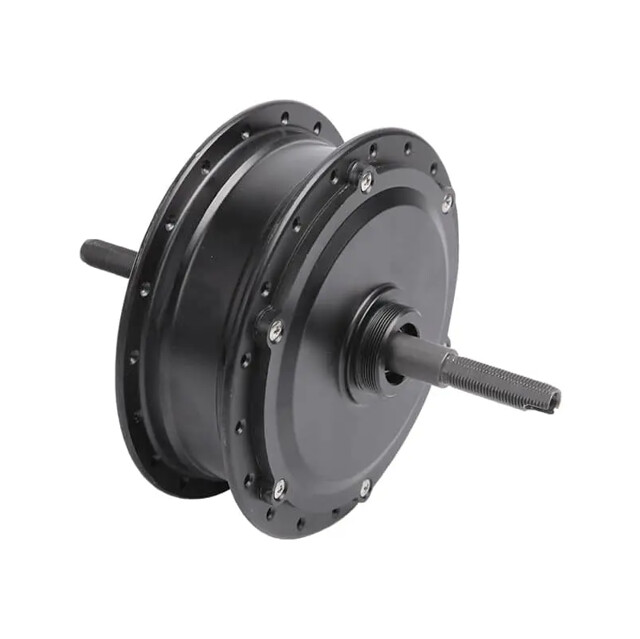High Density Interconnect PCBs
High density interconnect PCBs are a great choice where space, weight, and performance are primary concerns. They have a higher layer count and small traces and vias. They also require different fabrication and assembly processes than standard circuit boards.
These PCBs are used in avionics, smart weapons, defense networks, and industrial automation. They also have enhanced reliability thanks to their smaller aspect ratio and high-quality construction.
Cost-effectiveness
HDI PCBs are cost-effective because they allow designers to use smaller components, reduce the distance between the components and minimize vias. However, there are many factors that can impact the cost of an HDI board, including the materials used and the number of layers. It’s important to consider these factors when designing a board to ensure that it is cost-effective and can be manufactured easily.
A good way to save money when using HDI technology is to choose the right surface finish. This will help you cut costs by reducing the amount of solder required for the board. In addition, it’s important to consult your manufacturer at the beginning of your design process to determine which materials can achieve the best balance between price, manufacturability and performance.
Another factor that influences the cost of an HDI PCB is the number of layers and the type of stack-up. For example, a 2-n-2 high-density design has more layers than a 1-n-1 layout, which will increase the manufacturing cost. It’s also important to consider the size and location of the drilled holes, as well as the trace routing buildup layer.
The cost of an HDI PCB can be further reduced by choosing the right material for the core and the surface finishes. For instance, FR-4 is typically used for core material and HASL or ENIG HDI PCB is recommended for the surface finishes. Additionally, it’s important to choose a material that can tolerate copper migration and resist etching.
High-density interconnects
High-density interconnects are used to reduce the amount of space required by a PCB. They are a crucial part of the design process and require special considerations, such as signal integrity and power distribution. They also affect manufacturability and thermal management. This technology is enabling the creation of sleek, compact devices with better performance and reduced cost. It is particularly useful in medical equipment such as monitors, imaging systems, surgical instruments, and laboratory analysis.
The HDI manufacturing process involves several intricate steps, including microvia drilling and sequential lamination. The former entails using fine holes to establish connections between layers of the board, while the latter involves layering thin sheets of insulating material and conductive copper foil to form the circuit’s structure. Both techniques allow manufacturers to create PCBs with high-density interconnects while meeting rigorous DFM guidelines.
Vias, or conductive holes, are an integral component of HDI PCBs and enable them to transfer signals with greater ease. They have a smaller aspect ratio than through-holes, which improves the quality of signals and increases the reliability of the circuit board. In addition, they eliminate the need for stubs and minimize inductance within the distribution network.
Moreover, the use of these components reduces the number of layers required by a PCB and improves the quality of the board. It also allows the manufacturer to reduce the thickness of the PCB and decrease the overall cost without compromising its quality.
Miniaturization
The miniaturization of HDI PCBs is vital for today’s electronic devices. These boards feature a high-density of vias (tiny holes that facilitate layer-to-layer connections) and compact conductive pathways, making it possible to cram more functionalities into smaller devices. This allows engineers to create more advanced and compact devices with better performance.
The process of producing HDI PCBs requires careful planning and analysis, especially in terms of component placement. Strategic positioning of components can minimize signal interference and optimize functionality. It is also important to ensure that the correct number of layers are used, as this can significantly impact cost and circuit performance.
In addition, the thickness of the board can affect its performance. The more layers the PCB has, the thicker it will be and the more expensive it will be. Choosing the right thickness will require careful consideration of all factors involved in the design.
Another way to reduce the overall thickness of the PCB is to use buried vias. These are electroplated holes that are located inside the PCB and are not visible from the outside. They can be arranged in several ways, including staggered and stacked. This technique can also reduce the height of the copper plating cycle and improve electrical characteristics. In addition, it can be more reliable than standard through-holes.
Design flexibility
The smaller pin pitch of HDI PCBs allows designers to implement more components on a single board and still have enough space for routing. This makes it easy to incorporate high-speed and high-quality signal traces. These traces can be routed to vias on different layers or through in-pad vias. This technology also enables designers to use shorter and thinner traces.
The size of the traces and the number of layers in an HDI circuit board depend on the design and application. However, these boards are not suitable for applications that require a high level of performance or a large amount of current. This is because the finer lines can increase the chances of electromagnetic interference (EMI), which can disrupt data transmissions.
Unlike traditional PCBs, which are etched from copper, HDI circuit boards are PCB supplier made with an epoxy resin. The resin provides protection against moisture and corrosion. The boards are also made with smaller components, which reduces their weight and size. This technology is particularly beneficial for medical devices that rely on microprocessors and other small, complex parts.
In addition to reducing component packaging sizes, HDI PCBs can also decrease the cost of production. They utilize a lower layer count, laser drilling, and etching processes to produce smaller holes for interconnections. They can be produced in rigid-flex or flex and are available in a wide range of materials.


